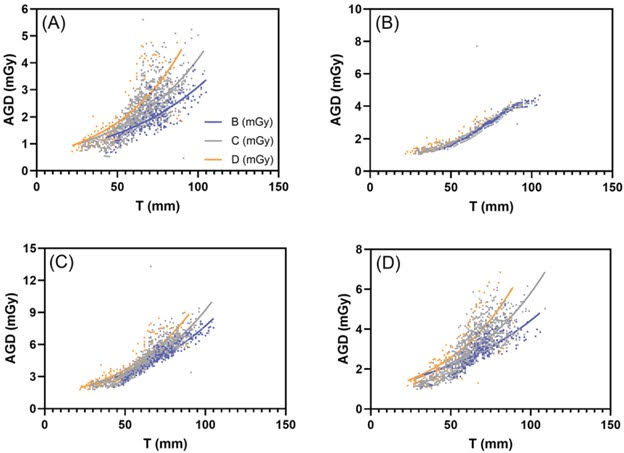Study Compares Mean Glandular Dose Across Three Breast Screening Exams
Images

In an intraindividual comparative study of full-field digital mammography (FFDM), digital breast tomosynthesis (DBT), and contrast-enhanced mammography (CEM), mean glandular does (MGD) per breast was higher for CEM than for FFDM or DBT alone, according to a study published in the American Journal of Roentgenology (AJR).
“However, these differences were small, and MGD was lower for CEM than for combined FFDM-DBT,” clarified first author Jeremiah W. Sanders, PhD, from the department of radiology, division of medical physics, at Mayo Clinic in Phoenix, AZ.
The study included 389 women (median age, 57.4 years) at elevated risk of breast cancer who, as participants in a previous prospective clinical trial, underwent breast cancer screening by combined FFDM-DBT and CEM between February 2019 and April 2021. A total of 764 breasts (383 left, 381 right) were evaluated. One craniocaudal (CC) view and one mediolateral oblique (MLO) view were evaluated per breast for each of FFDM, DBT, and CEM, while MGD was extracted via DICOM metadata. BI-RADS breast density categories were then extracted from clinical radiology reports. Data were summarized descriptively, including determination of corresponding effective doses.
Ultimately, median MGD per breast was 4.07 milligray (mGy) for FFDM alone, 4.97 mGy for DBT alone, 9.38 mGy for combined FFDM-DBT, and 5.87 mGy for CEM. Corresponding effective dose values were 0.49 mSv, 0.60 mSv, 1.13 mSv, and 0.70 mSv, respectively.
“This intraindividual comparative study informs discussions of the role of CEM in breast cancer screening for women at elevated risk or with dense breasts,” the authors added.